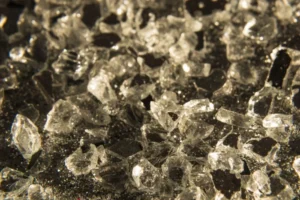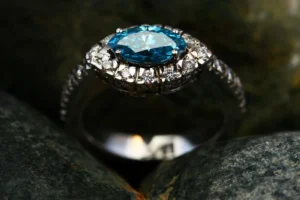Why would something made in a lab cost nearly as much as the real thing? That’s the question I found myself asking when shopping for an engagement ring last year. I’d always thought lab-grown diamonds were the budget-friendly alternative to mined ones, but the prices told a different story. What gives?
Over the past decade, lab-grown diamonds have shifted from a futuristic novelty to a mainstream option. They’re praised for being eco-friendlier and more ethical, but their cost often surprises buyers. So, why exactly are these man-made gems still so expensive?
Let’s take a closer look—from real-world buying experiences to expert insights and industry economics—to understand the premium behind the sparkle.
The Science Behind Lab Grown Diamonds
Lab-grown diamonds aren’t imitation or synthetic in the way cubic zirconia is. They’re real diamonds with the same chemical and physical properties as mined ones. They’re created using two main methods:
- High Pressure High Temperature (HPHT)
- Chemical Vapour Deposition (CVD)
Both processes replicate the conditions under which diamonds form naturally, but they do it in high-tech machines over a few weeks instead of billions of years.
Creating a flawless diamond in a lab isn’t as cheap as it might sound. It requires precision, advanced machinery, and massive amounts of energy—often at industrial scales.
“While the raw materials may be inexpensive, the technology needed to grow gem-quality diamonds is not,” says Dr. Gemma Forde, a materials scientist who’s worked in high-pressure lab environments.
High Costs of Cutting-Edge Technology
Building and operating a lab that can consistently produce high-quality diamonds is no small feat. These facilities require:
- Multi-million pound equipment
- Highly controlled environments
- Skilled technicians and engineers
- Consistent energy supply (often powered by fossil fuels)
Even with all that, not every diamond grown is usable. Just like mined stones, lab diamonds need to be cut, polished, and graded—by humans. This post-production process is costly and mirrors that of mined diamonds.
“We lose about 30% of each stone during cutting,” says Neil Cartwright, a diamond cutter based in Hatton Garden. “Lab or mined, you still need an experienced hand to bring out the brilliance.”
Branding and Market Perception
When I visited several jewellers across London, one thing stood out: lab-grown diamonds were being marketed as equals—not inferiors. Some were priced just 20–30% below mined diamonds, especially if they came with high-end branding.
Why? Because branding is powerful. Luxury jewellers package lab diamonds with just as much flair and exclusivity as their mined counterparts. Some even claim enhanced quality control and traceability as a bonus.
Consumers are paying for:
- Designer mark-ups
- Certification from reputable labs (like IGI or GIA)
- Custom settings and service experiences
Much like handbags or watches, perception plays a massive role in price.
Supply Chain Isn’t That Simple
Although lab-grown diamonds eliminate the need for mining, their supply chain isn’t as streamlined as you might think.
- Raw materials like graphite still need to be sourced
- Energy costs vary drastically by location
- Machines require maintenance and replacement
- Diamonds still go through international grading and trading processes
On top of that, the industry is still relatively young. The lack of economies of scale means prices haven’t yet dropped to the levels you might expect from mass production.
According to a 2023 Bain & Company report, only 25% of lab diamond manufacturers operate at a profitable scale.
Ethical Doesn’t Always Mean Cheaper
One of the biggest reasons people choose lab-grown is ethics. No child labour. No conflict zones. No environmental degradation.
But building a cleaner industry often comes with higher upfront costs:
- Certified carbon-neutral labs
- Fair wages for technicians
- Eco-friendly packaging and shipping
These are values more than savings—and companies price them accordingly.
I remember speaking to a startup founder in Leeds who insisted on 100% solar-powered production. “We’re not competing on price,” she said. “We’re offering peace of mind.”
Are Prices Going Down Over Time?
Yes—and no. While lab-grown diamonds have dropped in price by up to 70% over the past decade, much of that drop occurred early on. Now, prices are stabilising.
This is partly due to increased demand and limited competition among high-quality producers. Also, newer buyers aren’t just looking for ‘cheaper’; they want better value, traceability, and customisation.
The 2024 De Beers Diamond Insight Report notes that Gen Z buyers care more about ethical sourcing and environmental impact than previous generations.
Practical Tips for Buyers
So, if you’re in the market for a lab-grown diamond, how do you make sure you’re getting good value?
1. Compare Across Multiple Retailers – Some jewellers still charge a premium. Shop around and don’t be afraid to negotiate.
2. Understand Certification – Look for IGI or GIA certification to ensure quality.
3. Prioritise Your Values – Is it price, origin, environmental impact, or appearance that matters most to you? Let that guide your choice.
4. Consider Customisation – Many brands offer bespoke designs without a huge markup.
5. Ask About Energy Sources – Especially if sustainability is your main reason for choosing lab-grown.
FAQs
Are lab-grown diamonds really cheaper than natural ones?
Generally, yes—usually 20–50% cheaper. But premium branding and customisation can close that gap quickly.
Do lab-grown diamonds hold their value?
Not as much as mined diamonds. The resale market is still developing, and demand is lower.
Can you tell the difference between lab and natural diamonds?
To the naked eye, no. Even professionals need specialised equipment.
Are lab-grown diamonds eco-friendly?
They can be—but it depends on the lab’s energy source and practices.
Will prices continue to drop?
Possibly, but not dramatically. As quality and branding improve, prices may remain stable.
Final Thoughts
Lab-grown diamonds are expensive for good reason. While they don’t carry the environmental and ethical baggage of mined diamonds, they’re still the result of high-tech innovation, skilled craftsmanship, and growing consumer demand.
If you’re looking to buy, focus less on the comparison to mined stones and more on what you’re actually getting: a brilliant, responsibly made gem with a story you can stand behind.
Have you bought or considered a lab-grown diamond? Share your thoughts below—I’d love to hear your take.
You may also want to learn Are these science made stone worth it? and their impact on our life energy.
If you want to learn more about gemstones then visit our site.



